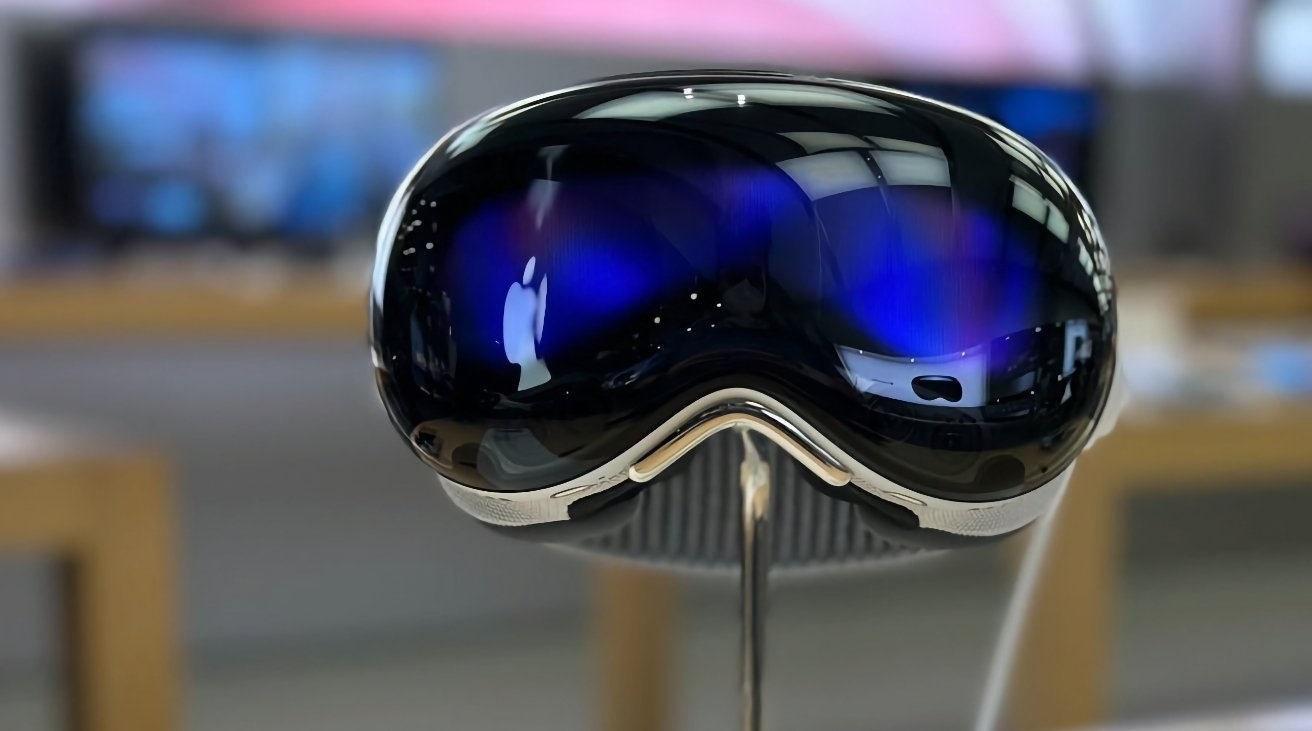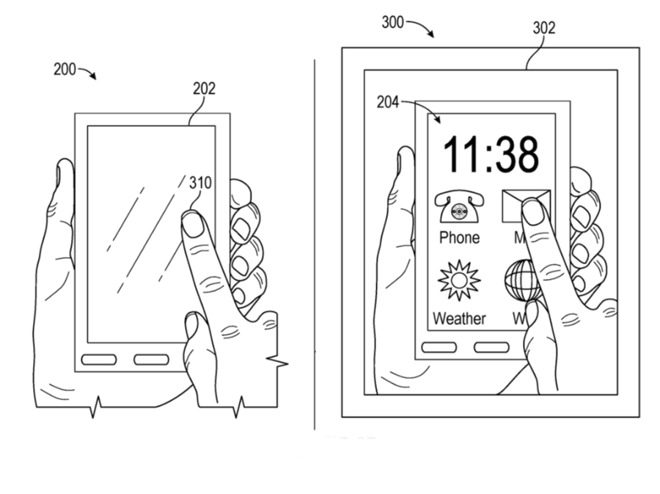Future visionOS could mirror a display without the iPhone or Mac's screen being on
If this technology comes to fruition, an Apple Vision Pro or an iPhone could be used to privately display the a screen of a blanked-out iPhone or Mac.

The Apple Vision Pro could apply AR to render a blank iPhone's display
Apple repeatedly says that privacy is not some add-on extra, it's baked in from the start, and it appears to be demonstrating that with the latest of thousands of patents regarding the Apple Vision Pro. A repeated patent filing by Apple demonstrates how to leverage Apple AR to effectively create ways to protect privacy.
The "Privacy Screen" patent proposes a way that limits what anyone but the device owner actually sees. It's specifically meant to get rid of the need for polarized screen covers that cut down the viewing angle.

To anyone else, the iPad screen can seem blank. The owner, using Vision Pro or an iPhone, could see a regular iPad screen.
"[Those] traditional privacy screens attenuate some of the light in the direction perpendicular to the display, which reduces the brightness perceived by the user," says the application. "To compensate, a user may remove the privacy screen when privacy is not a concern, in which case the user has to store, transport, and re-install the privacy screen."
The application complains that these screens sometimes cause the device to increase brightness to compensate, and then that reduces battery life. Above all else, a screen can make it awkward to see, markedly affects battery life, and still doesn't prevent everyone seeing it.
Apple's proposal does away with a screen being placed over an iPad or iPhone and instead leverages AR and Vision Pro. While there are different approaches described in the application, such as viewing on a iPad display, the chief one is a method of using information being presented on the Vision Pro.
If you're wearing Vision Pro and you look at your iPad screen, AR could make it appear to you as if there is a normal display on that device. For anyone around or even behind you, the iPad could look completely blank.
That doesn't sound immediately practical. It's clever that AR can map a display onto the iPad's screen when you're looking at it. But it would seem more sensible to just put that data on the Vision Pro screen and do without the iPad or iPhone altogether.
However, this proposed system would do more. As well as passively displaying information to read, the AR system would make it appear that controls were on the iPad screen. The iPad could then register the user tapping on those controls.
The result is that to anyone around you, it appears as if you are randomly tapping on a blank screen. But to you, it is exactly as if you are using a regular iPad or iPhone.

Detail from the patent showing (left) a "blank" screen and (right) what the Vision Pro wearer could see
As well as relying on the iPad, or similar screen, to register taps, the application discusses how a pair of devices can determine their relative position. In this case, the privacy aspect could be that when you lift your Apple Watch, it recognizes that you're not looking at your iPhone.
It could then route required information to the Watch's display instead, and at the same time blank the screen on the phone.
The application, titled "Privacy Screen" and filed on February 5, 2025, is effectively a re-application of an earlier granted patent, also called "Privacy Screen," going back to December 23, 2021.
Analysis of the two patents show that they are for the same subject, and almost all of the images used in the latest application were used in a previous 2021 patent. Indeed, the patent is listed as a continuation of similar patents filed in 2023, 2021, 2020, and 2017.
The text of the filing has been massaged slightly from the previous iterations, but the bulk of it has remained unchanged from in previous filings. The only obvious changes are mentions of a third device, meaning it could be used by multiple viewers at the same time.
The patent application is credited to two inventors, Clement Pierre Nicolas Boissiere, and Timothy R. Oriol. The latter has multiple previous patents, including related ones to do with Apple's AR plans.
Read on AppleInsider

Comments
If it runs on the latest A-Series chips (A14 at the earliest) then there's no reason it couldn't.
Seems terribly complex for what is ultimately of limited benefit.
Just saying.